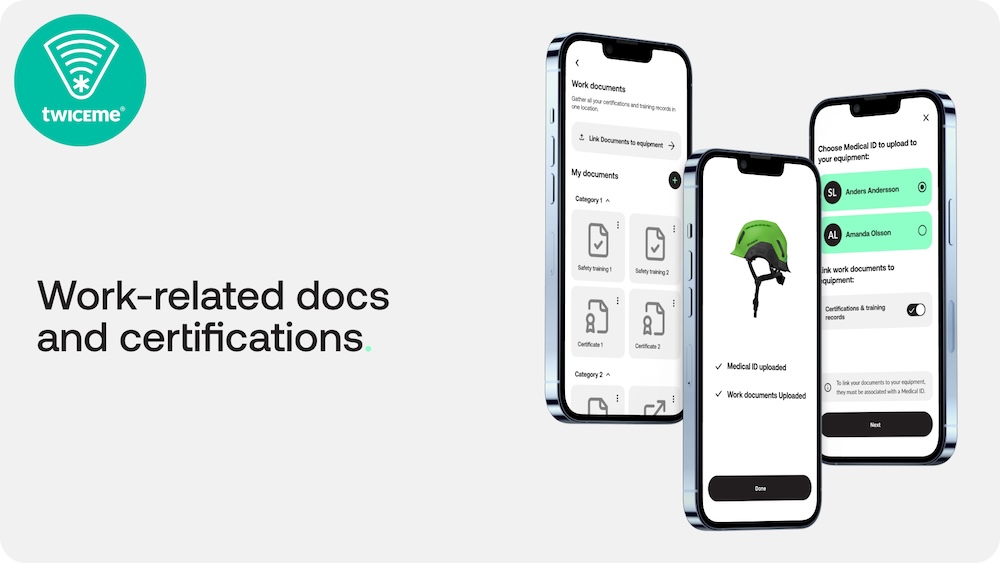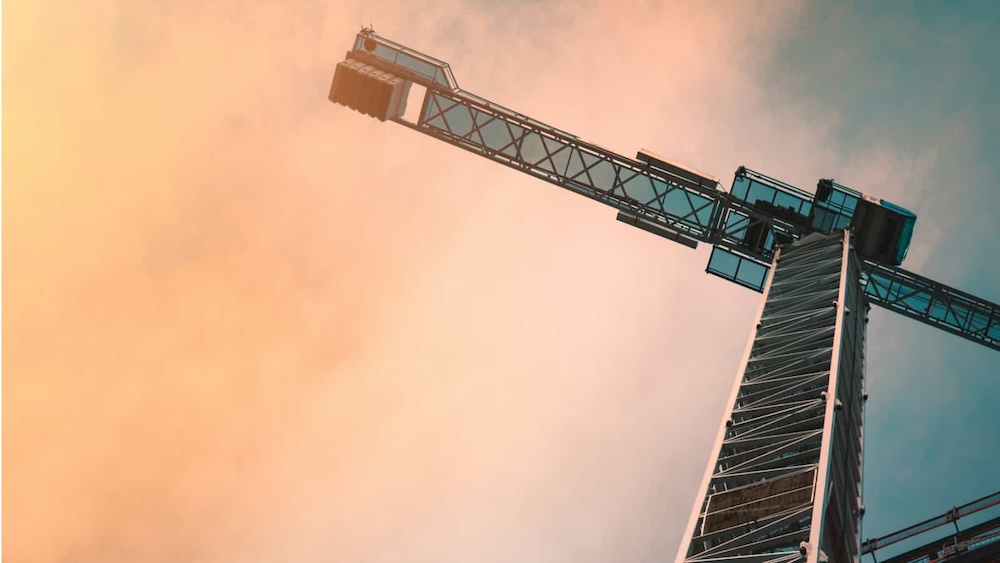Safety Harness Buying Guide 2023
The safety harness market is vast and complicated. We compiled a guide with some of the important issues to consider when buying a body harness. We also provide some recommended harnesses for the savvy ones.

The safety harness market is a vast and complicated place. We compiled a guide with some of the important issues to consider when on the lookout for a body harness. See this guide as an entry point to fall protection and the different types, features and the different pitfalls you might fall into (!) as well as giving you insight into some of the best safety harnesses on the market right now!
The need for fall protection harnesses
To start us off, what is the purpose of a safety harness? In its simplicity, it is to keep you safe when working in an environment that is prone to injuries from a fall. However, different harnesses provide a solution for different needs. There are four classes of fall protection equipment.
Class 1: Largely composed of body belts their main function is to prevent falls, or arrest them completely within 3 feet by restraining a person in a hazardous work position.
Class 2: Mosty chest-mounted harnesses and they are only to be used when there is limited fall hazard risk.
Class 3: This is where we find the full-body harness. Used to arrest severe free falls.
Class 4: Lastly we have suspension belts for supporting a suspended person without cutting off their circulation. Used when a person is in an elevated position for longer periods.
There are some arguments against using a Class 1 body belt. OSHA will not write a citation for using a body belt unless explicitly specified. OSHA does however strongly recommend using a full-body harness when working in elevated areas where fall protection is needed. This is mostly because if you are left hanging from a body belt you are in a race against asphyxiation. A fully grown adult female has around 2 minutes and 30 seconds before she dies of asphyxiation when using a body belt. Compare that to the 19 to 29 minutes when using a full-body harness.
What to consider when buying a safety harness
When choosing a safety harness we strongly recommend getting in contact with an expert that can help you with finding the right fit for you and your work environment. If you find yourself in a situation where you need to make an educated choice of your own, here are a few things to consider.
First off you will need to think about the type of work you will be doing when wearing the harness. Will you be working in an elevated position for extended periods? A sit harness will probably be the best fit for you. Will you be confined to smaller spaces while working? A confined space harness is most likely what you are looking for. Then there are multi-purpose harnesses that excel in several different applications. This all depends on your needs.
Padding and fit
Another thing to consider is padding and fit. Safety harnesses have historically never been the most comfortable thing to wear but today a lot of manufacturers use padding to relieve the discomfort. In the same vein, the fit of your harness should be comfortable, but more importantly safe. We all have differently shaped bodies and manufacturers try to accommodate this by having adjustable straps and removable padding but you still need to be aware of the different sizes to ensure the harness is neither too small, giving you an uncomfortable fit, nor too big, risking an unsafe working environment.
Webbing
Yet another big improvement in safety harnesses is the webbing. The webbings main purpose is to withstand the pressures exuded on it. We have seen developments in liquid-repellent webbing, heat-resistant webbing as well as elastic webbing to improve the ergonomics and comfortability of the harness. The choice of webbing mostly depends on your needs but a good webbing can definitely relieve you of some headaches in the future.
Specialized and integrated features
The last thing to consider is specialized accessories and other integrated features. Some specialized features might include an added life vest for working above water or an added hi-viz jacket to the harness. These will oftentimes be very specific and might not bring any added value to everyone, but if your work requires it, these specialized accessories can be a lifesaver.
Integrated features on the other hand usually are not as specific and can provide value or extra safety for a broad spectrum of industries but they are in no way required. These might include features such as:
The spring-loaded dorsal D-rings stay upright making them easier to reach than other conventional designs. The dorsal D-ring is the main attachment point for lanyards, vertical lifelines, and retractables. So when a fall occurs the D-ring on your back will be the one holding you.
Impact indicators on the dorsal D-ring can provide an alert that the harness has been exposed to a bigger fall. While these indicators should not replace normally scheduled inspections of the safety equipment, they may provide some valuable insight if a D-ring should be replaced or not.
Twiceme HTH technology is a safety technology that allows bystanders to alert, locate, and identify an incapacitated person. Safety info such as a medical ID, insurance details, and phone numbers can be made available to people around you - by the tap of a smartphone. It's also a tool that can be used at construction sites to keep equipment in check, through yearly equipment health check-ups and inspection system.
Our buying guide
So now that we have all the information we need, let us start with some of our recommendations for the best safety harnesses to buy! These are all great choices for anyone, therefore this list will not be ranked in a specific order. Lastly, before we begin we want to say that this list will give you great insight into harnesses but we will always recommend the advice of a genuine harness expert.
Fall Safe Spindel PRO
Specifications:
Material: aluminum and steel | PES Water repellent
Adjustment points: 11
Tool holding points: 7
Max load: 140 KG
Twiceme System Tag
Complies with: CE EN361 EN358 and EN813
Spindel PRO has 9 adjustment points, including unique ventral and vertical leg extension adjustments. This harness has wide and semi-rigid leg stops to give the user more comfort while working. It was built with a seat connector and multiple D-ring attachment points for more versatile use.
The Croc 3.0 padding, allows air to circulate through all the layers of the harness, and this new version has specific pressure points with soft-material for exceptional comfort. This innovation also allows for a lighter and more ergonomic end product, which is extremely comfortable for hours on end in suspension.
With reflective and extra breathable fabric, Spindel PRO combines a lightweight design with Fall Safe quality assurance.
The Spindel PRO is the first safety harness to integrate Twiceme to provide coworkers or rescue personnel at the site with personal identification and medical information about the wearer. It has a built-in chip that stores this information locally meaning you do not have to be connected to the internet to access this information.
It also has a RFID tag and QRCode label to register the product on the FALL SAFE INSPECTOR® PPE safety management system for the distributor, end user and PPE inspector.
3M™ DBI-SALA® ExoFit™ X300
Specifications:
Material: Aluminum and Polyester Webbing
Adjustment points: 1,2,3,4 or 6
Max load: 190 KG
3M™ Connected Safety ID (RFID) for simplified inventory, inspection, and record management
Complies with: ANSI Z359.11, OSHA 1910.140, and OSHA 1926.502
The X3000 has up to 6 adjustment points. It is built with a polyester/nylon hybrid and 3M reflective padding for a comfortable fit. With the SRL easy-link, you can easily switch SRLs.
The integrated 3M connected safety ID allows you to track and manage safety inspections and inventory. It allows you to record and inspect information about the harness. Most 3M PPE is equipped with this RFID and is available as a standalone tag to attach to other equipment.
It is in our experience one of the most comfortable harnesses on the market, though some people have had issues with the belt digging into their sides. Like a good pair of boots, this will cost you but it is a price you pay for comfortability and more importantly the safety it provides.
Guardian B7-Comfort Harness
Material: polyester, steel, aluminum, and nylon.
Adjustment points: 6
Max load: 191 KG
Complies with: ANSI Z359.11, OSHA 1910.140, and OSHA 1926.502
The Guardian B7-Comfort Harness, crafted based on extensive end-user feedback, offers precision adjustments and premium comfort. It's designed to meet the industry's demand for enhanced adjustability, speed, and safety.
The B7-Comfort is a game-changer in comfort and safety due to its unique patented features and industrial design, and some of these include:
The DiaLock Torso Adjusters, with their patent-pending design, provide a simple, fast, and precise adjustment solution. The Three-Six-O Harness Chassis maintains full harness integration while enabling independent movement of the torso, sub-pelvic region, and legs. The leg pads feature patent-pending Trauma Suspension Relief Straps to assist in post-fall rescue efforts.
Choosing the best safety harness can get confusing. It is easy to get lost in the features and specs. Working in this industry comes with its risks and we should always do our best to mitigate the dangers associated with it. That's why the absolute most important part is to actually wear your safety equipment.
Discover More Exciting Content.
Explore more related articles

Securis Selects Twiceme Technology as Its Connected Safety Partner for Entire Product Line of Industrial Safety Helmets

Twiceme CEO Joins ISEA Executive Summit Panel to Discuss Connected Safety

The Digital Divide in Construction Safety

Introducing Twiceme's New Feature: Work-related Documents and Certifications Upload
.jpg)
Twiceme University: Newly Launched Online Education Platform
